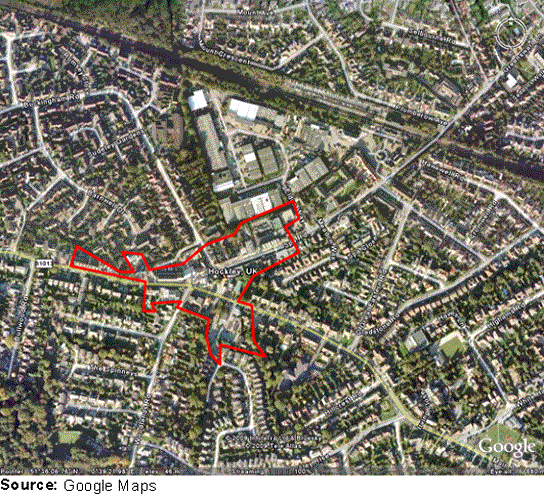Allocations DPD Discussion and Consultation Document
(4) 6. Town Centres
There are three town centres in the District: Rayleigh, Rochford and Hockley.
Town Centres are defined as “the principal centre or centres in a local authority’s area” within Planning Policy Statement 4. District centres are stated as being areas with groups of shops, at least one of which is a supermarket/store. A District Centre will also comprise some non-retail services such as restaurants and banks, and some public services such as a library.
The Retail and Leisure Study August 2008 found that Rochford District suffers from expenditure leakage to out-of-district centres. Rayleigh, being the largest centre in the District does not suffer as greatly, and has the highest spending retention levels. Rochford and Hockley on the other hand perform poorly when it came to expenditure retention.
In recognition of the importance of town centres, not simply for retail but also as a focus for community and leisure activities, the Council has resolved to produce Area Action Plans for Hockley, Rayleigh and Rochford centres.
However, in the interim, it is important to allocate land with regards to the District’s town centres to ensure they continue to perform their valuable functions. Town centre boundaries need to be defined, as well as primary shopping areas.
The town centre should be an area that consists of the primary shopping area and areas that are predominantly business, leisure, and other associated town centre uses within or adjacent to the primary shopping frontages.
PPS4 also advises that primary frontages should contain a high proportion of retail uses whereas secondary frontages should offer more opportunities for flexibility, and a wider range of uses.
(1) Rayleigh
The Retail and Leisure Study 2008 highlighted that Rayleigh is the principal town within the District, and has both strong comparison and strong convenience sectors. It was also noted that Rayleigh consists of a range of unit sizes enabling a diverse range of retailers to be based there.
Rayleigh is the largest of the three centres in Rochford District, and has the most comprehensive range of facilities. There are a range of retail outlets, with chain stores and independent stores making use of the variety of unit sizes available to them. However, there are opportunities for improvement within the centre. The Retail and Leisure Study recommended additional comparison floorspace be considered. The study also stated that there was little need to change the town centre boundary.
Potential options for Rayleigh centre are as follows:
(2) Option TC1 – Existing Town Centre Boundary
This option is as existing.
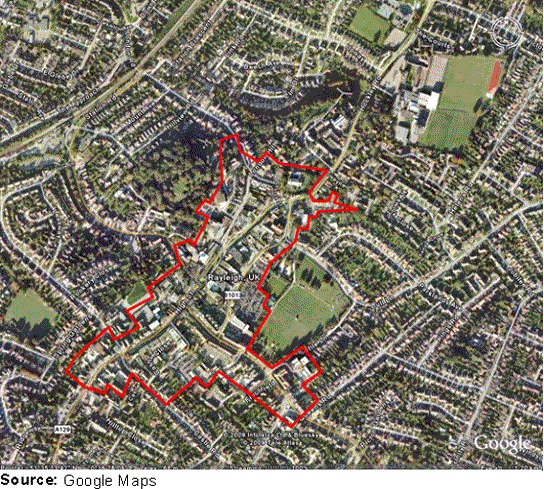
Option TC2 – Town Centre Boundary around Primary Shopping Area
One option for Rayleigh town centre is to streamline the town centre boundary to cover only the areas designated as Primary Shopping.
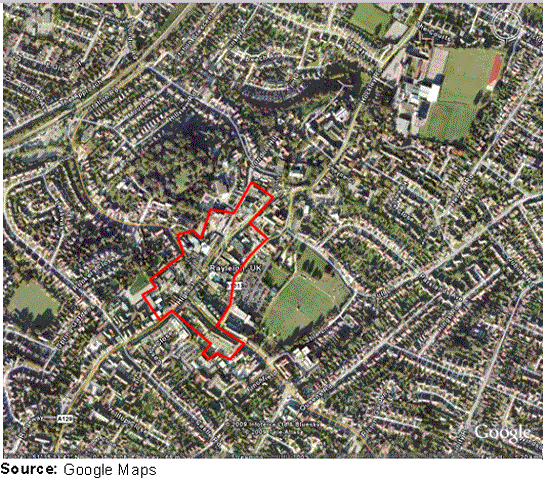
(1) What are your views on these options for town centre boundaries for Rayleigh?
(2) Rochford
Rochford centre was noted as being the second largest centre in the District, with strong comparison and convenience sectors, and also benefits from a unique layout. However several weaknesses were highlighted, including a lack of comparison goods floorspace, and a large number of smaller units. It was noted that there are opportunities for improvement within the centre.
The potential for Rochford as a centre was noted, particularly in reference to Market Square which could act as a strong focal point. The Market Square is dominated by the available car parking.
A Place Check Initiative was held, with members of the Citizens Panel, to discuss options and ideas for Rochford centre. Several options came out of this:
- Varying views on whether the Market Square should be pedestrianised
- Memorial in the Market Square
- Café/Bar in the Market Square
- Pedestrian Crossings in the Market Square
- Free car parking to encourage people to shop in the centre
- Landmark development over the Spar store at the eastern end of the Square
- More entertainment and leisure facilities, particularly for those under 18
- Improved shelter and positioning of bus stops
- Concerns regarding dominance of vehicles around the town centre
- Maintaining the historic nature of the town centre.
As a result of the consultation held on this, several options have been considered:
(3) Option TC3 – Existing Town Centre Boundary
The Retail and Leisure Study stated that there was potential to provide greater definition and focus to the town centre of Rochford by reviewing the boundary. The boundary currently comprises a fairly large area with a lot of non retail use, including a significant amount of residential. Refocusing the town centre boundary would enable retail to be focussed in a smaller area, preventing retail development from being diluted over a larger area isolated from the main square.Option TC4 – Town Centre Boundary Centred around Market Square
The refocusing of the town centre boundary in this way concentrates retail development into a smaller area, more centred around the town square. However, some retail at the junction of West Street and Bradley Way have not been included as they are more isolated from the heart of the town. The refocusing of the boundary in this way will also limit the retail opportunities along Bradley Way. The refocusing of the boundary in this option centres retail development around the main town square and the area immediately surrounding it.
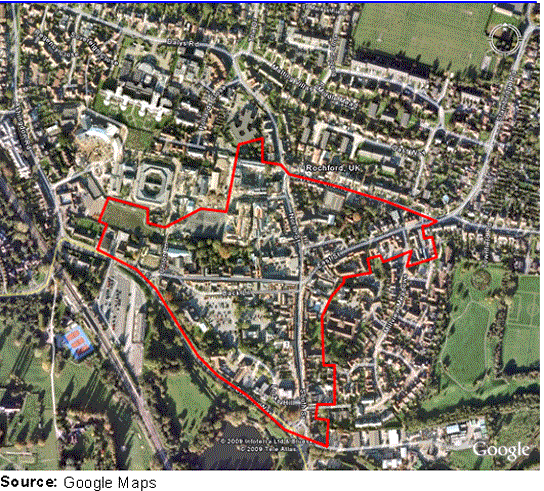
(3) Option TC4 – Town Centre Boundary Centred around Market Square
The refocusing of the town centre boundary in this way concentrates retail development into a smaller area, more centred around the town square. However, some retail at the junction of West Street and Bradley Way have not been included as they are more isolated from the heart of the town. The refocusing of the boundary in this way will also limit the retail opportunities along Bradley Way. The refocusing of the boundary in this option centres retail development around the main town square and the area immediately surrounding it.
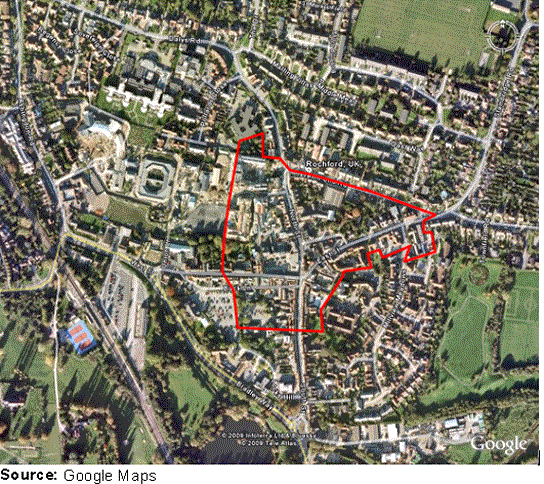
(1) Option TC5 – Town Centre Boundary inclusive of Residential Areas
This option again refines the area covered within the town centre allocation and includes some residential areas. The area is concentrated around the Market Square and the surrounding area. This does however concentrate retail into a smaller area, and restricts the growth of the town to some extent.
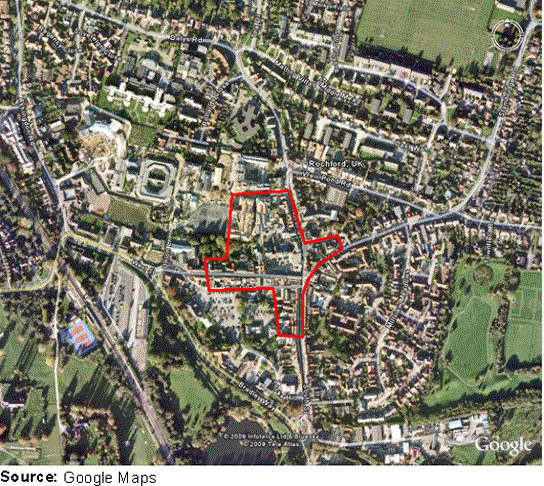
(2) Option TC6 – Town Centre Boundary Centred on Market Square
This option refocuses the town centre boundary around a much smaller area, largely concentrated around the existing market square and its immediate vicinity. This therefore does not include housing development and residential areas. This does however limit retail development to a much more constrained area.
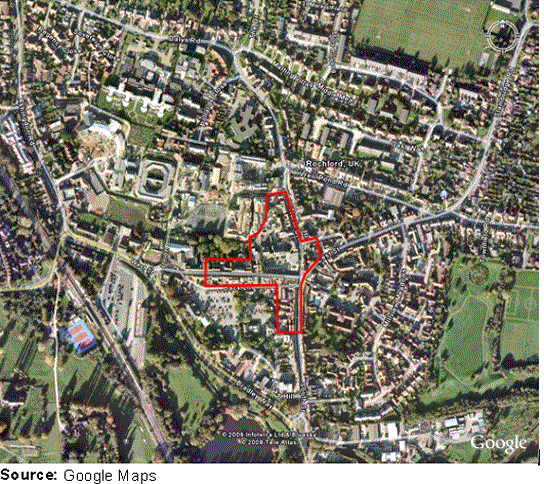
(1) What are your views on these options for town centre boundaries for Rochford?
(5) Hockley
Hockley was noted as being the smallest of the centres within the District, although still benefits from a strong comparison goods sector and a good mix of independent traders. Opportunities were identified however with significant improvements available.
The Hockley Parish Plan was published in 2007 and stated that Hockley was too large to be a village yet too small to be a town. The plan also states that people like Hockley as it is, and want to preserve it and maintain it rather than see it expand or grow. Residents are keen to ensure that Hockley remains as a distinct community, and historic buildings should be preserved. It is recognised that there are some transport and highways issues in the centre of Hockley.
Hockley was noted in the Retail and Leisure Study 2008 as being the weakest of the three centres, with a number of opportunities for improvement. A Place Check event was held, and a consultation was undertaken on the Council’s website with the Citizens Panel. Key points arising from this are as follows:
- More free parking
- Clearly marked parking regulations
- Litter on the streets and many aspects of the town are in poor state of repair
- Not a wide range of shops
- Improvement of the station forecourt is needed
- More leisure facilities particularly for under 18’s
- CCTV is needed
- Traffic improvements are necessary
- Any development should not encroach on green space and should be environmentally friendly
Potential options are as follows:
(459) Option TC7 – Existing Town Centre Boundary
The existing town centre boundary excludes Eldon Way and the Foundry Industrial Estates.
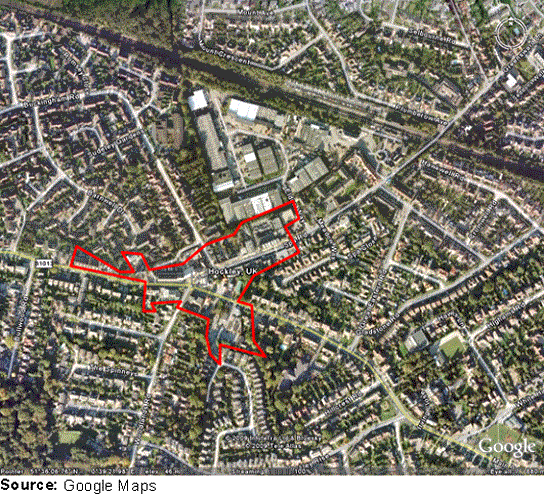
(6) >Option TC8 – Town Centre Boundary Centred Around Primary Shopping Area
This option narrows the area covered by the town centre boundary slightly in that the row of shops to the west is not included. This streamlines the area covered within the town centre, and restricts the opportunities for expansion, thus helping to maintain the feel of the area. This will also enable the creation of a “boutique” style area which was stated as being a potential for the area within the Retail and Leisure Study 2008.
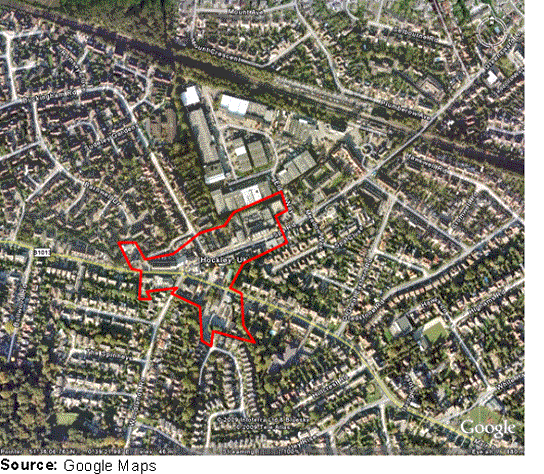
(444) Option TC9 – Town Centre Boundary inclusive of Eldon Way / Foundry Industrial Estate
This option includes the Foundry and Eldon Way Industrial Estates.
The Retail and Leisure Study indicated that the focus of Hockley centre should be on maintaining and developing existing strengths, rather than retail expansion. The study also suggested that within Hockley there is the scope to develop Hockley as a boutique shopping destination with small independent high quality traders.
Including the Eldon Way Industrial Estate and Foundry Industrial Estate within the town centre boundary, will extend the area comprising the town centre and thus give opportunity for expansion. This is however not promoted within the Retail and Leisure Study and would detract the focus away from maintaining and improving the current town centre.
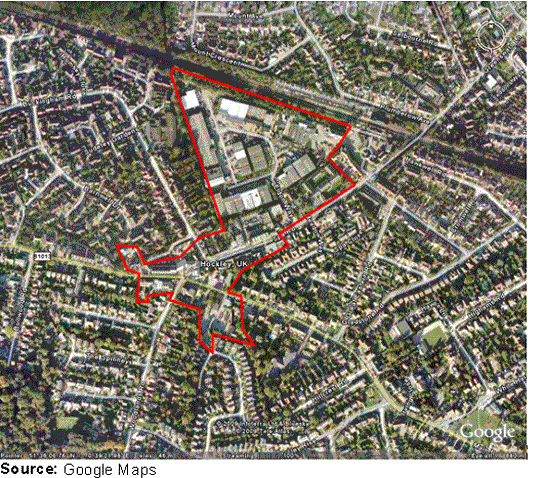
(1) What are your views on these options for town centre boundaries for Hockley?
(465) Option TC10 – Reallocation of Hockley as a District Centre
A District Centre is defined as an area with groups of shops, usually containing at least one superstore/supermarket, and a range of services including banks and restaurants.
The Retail and Leisure Study August 2008 also noted that currently Hockley is not fulfilling the functions of a town centre and it may be possible to reallocate this area as a District Centre as an alternative. This would protect the area from further expansion and retail growth, thus preserving the village feel. However this would also mean that an opportunity to regenerate and improve the area would be lost and as such improvements to the area in any form would be restricted.
(6) Do you think Hockley centre should be reallocated as a District Centre?
Primary Shopping Areas
A primary shopping area is an area consisting of predominantly retail, of primary and secondary frontages.
Rayleigh
Option TC11 – Existing Primary Shopping Frontage forms Primary Shopping Area
This option is based around the existing Primary Shopping Frontage Area, but excludes the area currently within the Secondary Shopping Frontage Area. This allows for a greater concentration of retail in the area.
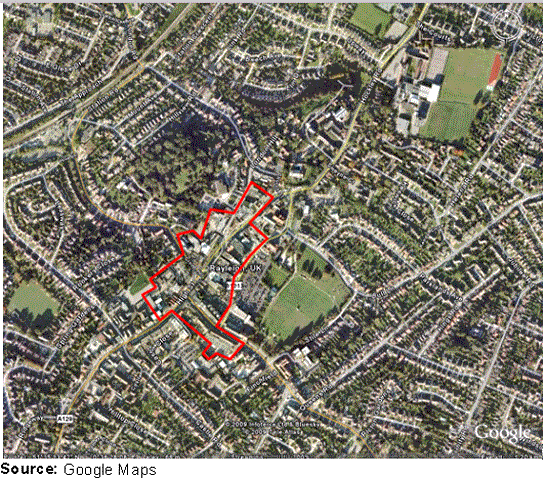
(2) Option TC12 – Existing Primary and Secondary Shopping Frontages combined to form Primary Shopping Area
This option entails the merger of the existing Primary and Secondary Shopping frontages to form the Primary Shopping Area. If the two frontages are merged under one boundary there would be more opportunity for offices, alongside retail. This would lead to a town centre with a mix of retail, offices, business and leisure. However this also dilutes the retail in the area. Other uses have the potential to add focus to the town centre.
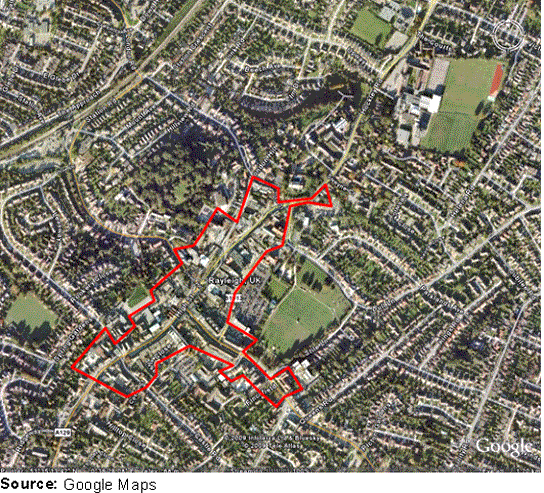
Which option for the Primary Shopping Area of Rayleigh do you prefer?
Are there any other options that should be considered?
Should the Council differentiate between primary and secondary frontage areas within the Primary Shopping Area?
Rochford
(2) Option TC13 – Existing Primary Shopping Frontage forms Primary Shopping Area
This option is based around the existing Primary Shopping Frontage Area, but excludes the area currently within the Secondary Shopping Frontage Area. This allows for a greater concentration of retail in the area.
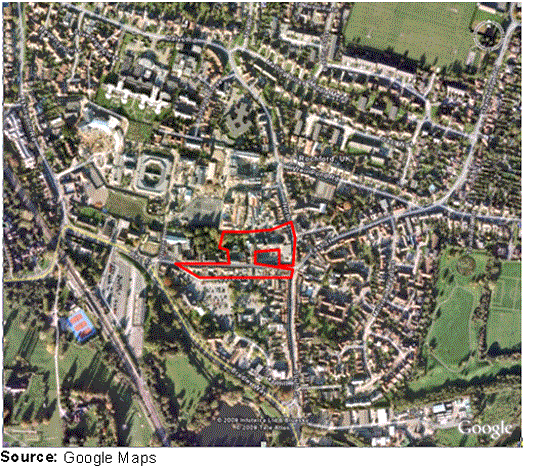
Option TC14 –
This option entails the merger of the existing Primary and Secondary Shopping frontages to form the Primary Shopping Area. If the two frontages are merged under one boundary there would be more opportunity for other town centre uses, alongside retail. However this also dilutes the retail in the area.
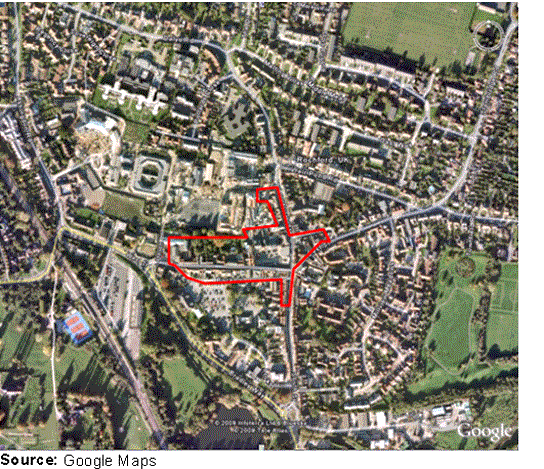
Which option for the Primary Shopping Area of Rochford do you prefer?
Are there any other options that should be considered?
Should the Council differentiate between primary and secondary frontage areas within the Primary Shopping Area?
Should the new mixed-use development, including food store, to the north of the Market Square be included within the Primary Shopping Area?
(2) Hockley
(6) Option TC15 – Existing Primary Shopping Frontage forms Primary Shopping Area
This segregates the main primary frontage seen in Hockley town centre. This allows for a greater concentration of retail in the area.
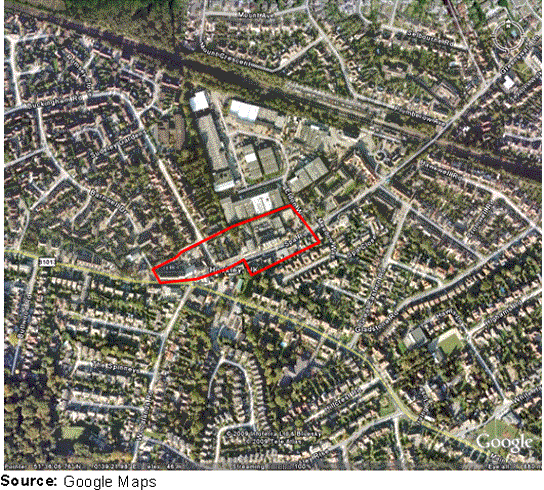
(462) Option TC16
This option entails the merger of the existing Primary and Secondary Shopping frontages to form the Primary Shopping Area. If the two frontages are merged under one boundary there would be more opportunity for other town centre uses, alongside retail. However this also dilutes the retail in the area.
